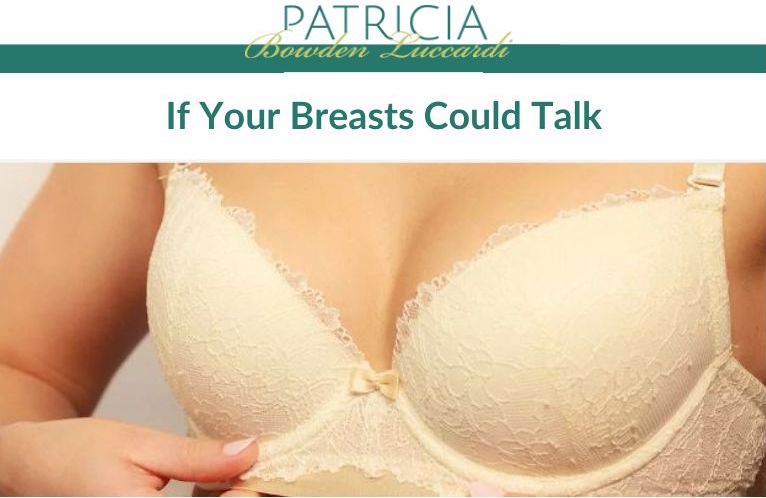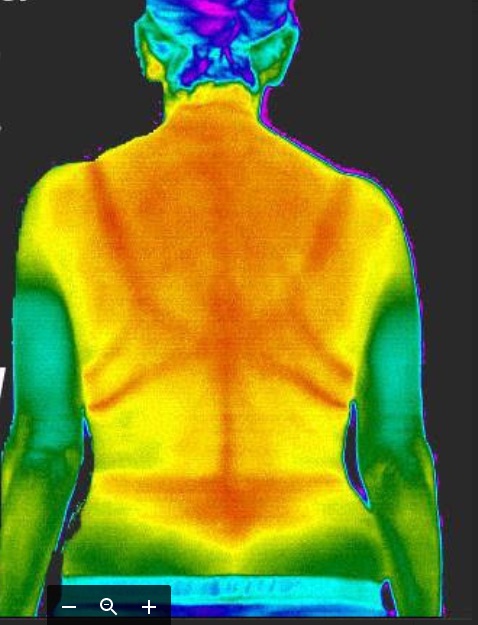If Your Breasts Could Talk

When you get home, after you take off your shoes, what’s the next thing you take off? Probably your bra.
But if society didn’t dictate wearing a bra, would you? Are you at a loss to find a comfortable bra? And if your breasts could talk, what do you think they would say?
I had the good fortune to be in dialog with Sydney Ross Singer, medical anthropologist, and co-author of Dressed To Kill: The Link between Breast Cancer and Bras.
He has studied the health impact of wearing bras around the world. Please enjoy this article, which he has given me permission to share:
Of all the body parts, the breasts would probably have the most to say, if they only could. But even if breasts could talk, would women listen?
In modern Western culture, breasts have taken on more than their biological role as mammary glands to feed babies. Breasts are cultural icons, sexualized and fetishized through the use of a special garment constructed to alter the shape and position of the breasts on the chest wall, to limit breast movement, and to hide the nipples. The garment, of course, is the brassiere, or bra.
How Do the Breasts Feel in a Bra?
Are they comfortable being compressed, constricted, and reshaped? When a bra leaves marks on the skin, it is from compression. This interferes with circulation in the breasts of blood and lymph. The result is pain, cysts, and ultimately, breast cancer.

This woman has not been wearing a bra for 15 minutes prior to her thermography exam. The red in her upper torso is lymphatic backup.
Of course, most women are introduced to bra usage when they reach puberty, as a rite of passage into womanhood and a future of needing to manage their breast appearance.
The “training bra” breaks the girls in, as they get used to the discomfort of having a tight band around the chest. After that, girls don’t think about the discomfort so much, or at least they learn to subordinate their breast discomfort to the mandates of fashion and society.
In other words, girls become desensitized to the feeling of their breasts through the use of bras. The chronic constriction of daily bra usage, however, does take a toll on breast health, leading to lymphatic stagnation, or lymph-stasis, with associated tissue toxification and eventual deterioration.
You can’t have healthy breasts if you have poor circulation from wearing tight bras daily. Circulate or deteriorate. The choice is each woman’s, although the fashion industry would like to make that choice for all women, turning breasts into fashion accessories.
Meanwhile, the breasts are crying for help, but are told to just shut up and put up with it.
Culture Has Usurped the Breasts for Fashion
Women are culturally compelled to wear bras to be socially accepted.
A fetish garment for the breasts that serves no biological purpose, and can also cause harm, is the standard of dress for women, even for professional women whose work has no relevance to a breast fetish.
The cultural programming needed to achieve this remarkable commitment to breast obsession has resulted in a cultural blind spot to the hazards of wearing tight bras.
As a result, the bra has become the leading cause of breast disease. Circulation of blood and lymph is essential for health, and any tight garment interferes with circulation. Women wear bras daily, often for 12 or more hours and sometimes 24/7. Over time, the constriction takes its toll.
And since bra use is universal throughout the culture, it’s hard to find bra-free women with whom to compare breast health with those who use bras. In order to see the problems caused by wearing bras, you need to have a comparison with bra-free breasts.
How Can You Tell if a Bra Is Causing Harm?
Bras are known to cause health problems, from headaches and back pain to nerve compression and tingling in the hands.
Bras have been shown to affect digestion, breathing, and even menstruation since bras also interfere with the sympathetic nervous system.
Bras constrict the lymphatic system, which is the circulatory pathway of the immune system. This causes reduced lymph and blood circulation, toxin accumulation, and reduced immune function, which leads to breast pain, cysts, and cancer.
The degree of damage from bras depends on the bra material and its toxic chemical content, its tightness, the length of time it is worn daily, and the number of years it has been worn.
Stop wearing a bra and see how it makes you feel. If bras have been harming you in some way, you will feel better when you stop wearing them.
If you feel you have been harmed by wearing a bra, please reach out to Sydney Ross Singer at sydsinger@gmail.com.
According to the 1991-93 US Bra and Breast Cancer Study, documented in Dressed to Kill: The Link Between Breast Cancer and Bras, bra-free women have about the same risk of breast cancer as men, while the tighter and longer the bra is worn the higher the risk rises, to over 100 times higher for a 24/7 bra user compared to a bra-free woman. Since that groundbreaking study, numerous other studies worldwide have confirmed a bra-cancer link.
Bras are also used as medical devices, worn tightly to stop lactation. And while a tight bra can cause breast lymphedema, bras are also used as a compression garment to manage lymphedema. Clearly, bras have an impact on breast function and circulation.
Despite the fact that bras affect the health of the breasts, bras are sold without any wearing instructions or warning labels. While manufacturers provide sizing charts, these do not mention the problems with wearing ill-fitting bras. In addition, many styles of bras are constrictive and tight by design, such as push-up and strapless bras, even if worn at the recommended size. There is also no mention of the maximum recommended wearing time for these garments.
Some bra manufacturers have responded to the consumer demand for more comfortable and healthy clothing, developing less toxic materials and more comfortable, less constrictive designs.
However, the lingerie industry may still be found liable for the harm caused by its products, and bras may eventually be required to have instructions about tightness and limiting the time that they’re worn.
Leave a Comment
